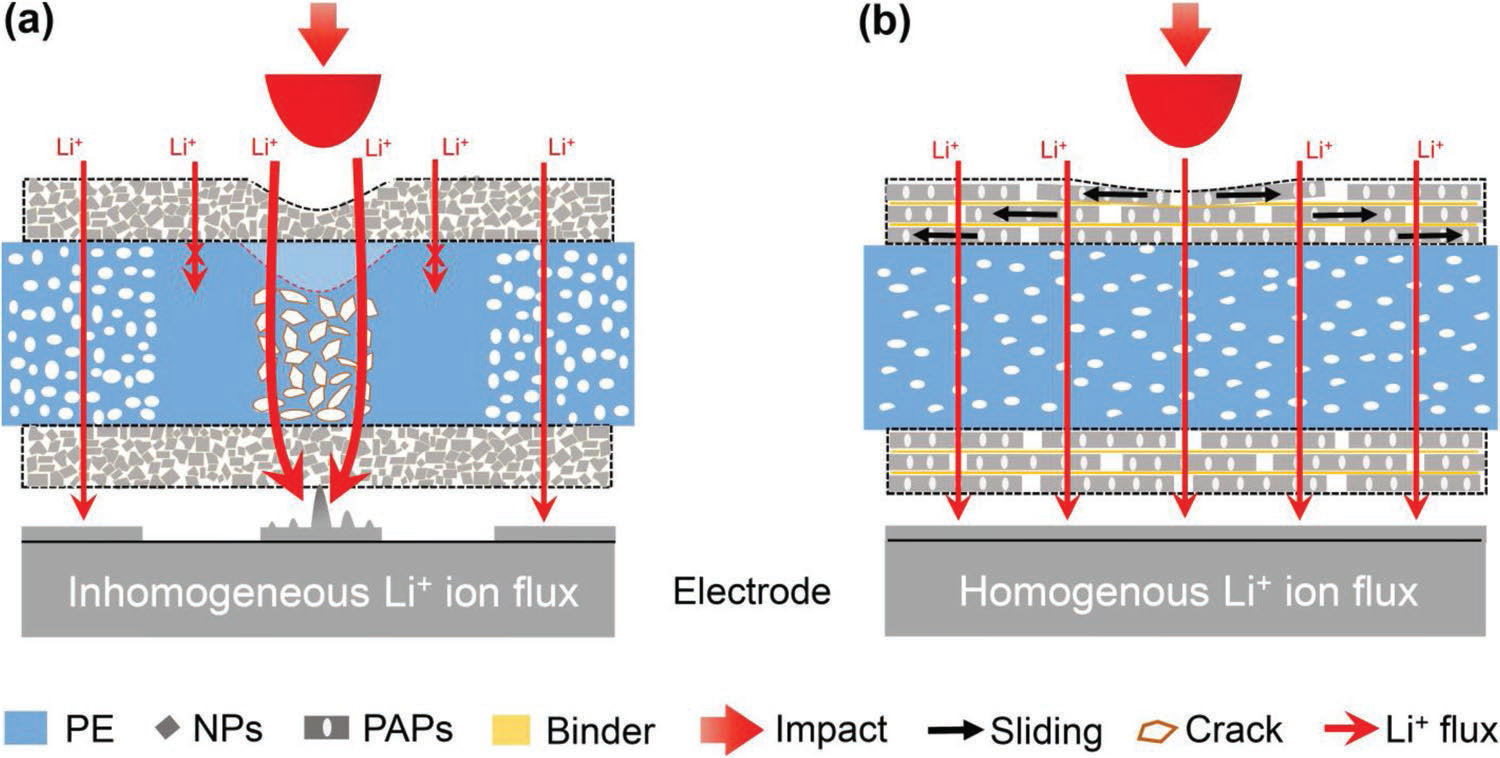
In modern life, lithium-ion batteries are used as mobile power sources in all aspects of daily life. As a key component of lithium-ion batteries, the separators strongly influence the performance and in particular the safety of lithium batteries.
However, under the stress of external shock, the widely used microporous polyolefin separator is easily deformable, accompanied with the change of inside porous network, including the pore closure, leading to the inhomogeneous Li+ ion flux in the lithium battery, which will create high local current density to trigger lithium dendrite growth on the electrode, resulting in short-circuit and even explosion of lithium batteries.
Therefore, it is important to develop a good impact resistant separator for improving the safety of lithium batteries. In a recent study published in Advanced Materials, a research team led by Prof. YAO Hongbin, NI Yong and YU Shuhong from University of Science and Technology of China (USTC) of the Chinese Academy of Sciences proposed a nacre-inspired coating on the separator to improve the safety of lithium battery under external impact.
The researchers developed an alkaline-solution-induced etching method in the aragonite platelets to dissolve the protein matrix along with some parts of amorphous calcium carbonate to yield porous structure.
The developed nacre-inspired protection strategy will open a new avenue for improving the safety of lithium batteries. The researchers believe the methodology used in this study is very suitable for industrialization. However, more stringent testing of the current separator is required before it is actually industrialized.
The researchers are looking for novel bio-inspirations to develop new separators with high mechanical properties and lithium-ion transference number. They want to build a prismatic/nacre composite membrane material that further enhances the impact resistance of lithium-ion batteries. Their ultimate goal is to provide advanced separators for high performance and safe lithium batteries.

Schematic impact-tolerance comparison of commercial separator and nacre-inspired separator. (Image by SONG Yonghui et al.)

86-10-68597521 (day)
86-10-68597289 (night)

86-10-68511095 (day)
86-10-68512458 (night)

cas_en@cas.cn

52 Sanlihe Rd., Xicheng District,
Beijing, China (100864)

